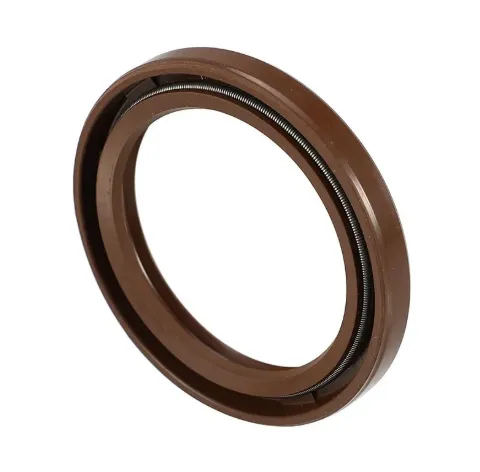Choosing the Right Oil Drain Plug: A Guide to Better, Cleaner Oil Changes
The oil drain plug may be one of the smallest parts of your engine, but it plays a crucial role in routine maintenance. Whether you're doing a standard oil change or fixing a damaged oil pan, choosing the correct oil drain plug can make the job easier, cleaner, and more efficient. In this guide, we’ll explore the different types of oil plugs—including quick drain oil plugs, self-tapping oil plugs, and universal oil drain plugs—to help you select the best option for your vehicle.

What Is an Oil Drain Plug and Why Does It Matter?
The oil drain plug is a threaded bolt located at the bottom of your vehicle’s oil pan. Its job is to seal the pan and allow for oil drainage during a change. When you unscrew the plug, the old oil flows out. When reinstalled (ideally with a new washer), it prevents leaks and keeps your engine oil secure.
Here’s why a quality oil plug matters:
Leak prevention: A properly fitted and sealed plug prevents oil from leaking.
Ease of maintenance: Some upgraded plugs, like quick drain oil plugs, can make oil changes faster and cleaner.
Damage repair: In cases where threads are stripped, a self-tapping oil drain plug can save your oil pan.
Quick Drain Oil Plugs: Fast, Tool-Free Oil Changes
One of the most convenient alternatives to the standard plug is the quick drain oil plug. These plugs are designed with a spring-loaded valve or lever that allows you to drain oil without removing the plug entirely. They're ideal for DIYers and fleet mechanics who want to speed up oil changes and avoid mess.
Advantages of quick drain plugs:
No tools needed to remove the plug
Reduces risk of burns or spills
Thread wear is minimized since the plug stays in place
Some brands even allow you to attach a hose to direct the oil into a container. They're available for a wide range of vehicles but check for compatibility with your make and model.
Universal and Self-Tapping Oil Drain Plugs: For Repairs and Replacements
Universal Oil Drain Plugs
A universal oil drain plug is designed to fit a wide range of vehicles. These are handy when exact replacements are hard to find, or you’re unsure of the correct size. Most universal plugs include multiple gaskets or expandable rubber seals that adjust to the hole size.
While convenient, universal plugs are best used temporarily or in non-critical situations. Always verify oil-tight sealing after installation.
Self-Tapping Oil Drain Plugs
If the threads in your oil pan are stripped or damaged, a self-tapping oil drain plug can save you from replacing the entire pan. These plugs have cutting threads that bite into the metal to create a new thread path as you screw it in.
When to use a self-tapping plug:
Thread damage from over-tightening
Emergency repairs on older vehicles
You want to delay or avoid costly pan replacement
It’s important to torque these correctly to avoid further damage. Some mechanics use them as a permanent fix, but in most cases, they're a stopgap to buy time until a full repair.
Choosing the Right Oil Plug for Your Vehicle
Here are a few quick tips when selecting any type of oil plug:
Size matters: Always check your drain plug’s thread size and pitch (e.g., M14x1.5).
Material durability: Steel and brass are more durable than aluminum or plastic plugs.
Replace when worn: If your plug’s threads are stripped, the head is rounded off, or the washer is crushed, replace it.
Use washers: Never skip the sealing washer; it prevents leaks and protects the pan threads.
If you’re regularly changing oil or maintaining multiple vehicles, it may be worth upgrading to quick drain oil plugs or keeping a few universal oil drain plugs and self-tapping plugs on hand.
Though small in size, the oil drain plug plays a vital role in your vehicle’s maintenance. Whether you’re sticking with a traditional plug or exploring options like quick drain oil plugs, universal oil drain plugs, or self-tapping oil plugs, choosing the right one will save you time, avoid mess, and extend your oil pan’s life.
-
Seal 12x20x5: Precision Radial Shaft Seals for Industrial Reliability
Iroyin Nov.24,2025
-
Seal 12x18x5: Essential Guide to Specifications, Applications & Vendors
Iroyin Nov.24,2025
-
Understanding Seal 12 20 5: Applications, Specifications & Industry Insights
Iroyin Nov.23,2025
-
Durable Oil Seal 85x110x12 – Reliable Sealing Solutions for Industry
Iroyin Nov.23,2025
-
Durable and Precise Oil Seal 75x95x10 for Efficient Machinery | YJM Seal
Iroyin Nov.22,2025
-
Durable Oil Seal 75x100x10 for Reliable Industrial Performance | YJM Seal
Iroyin Nov.22,2025
-
High-Quality Oil Seal 65x90x10 | Durable & Reliable Sealing Solutions
Iroyin Nov.22,2025
Awọn ẹka ọja















